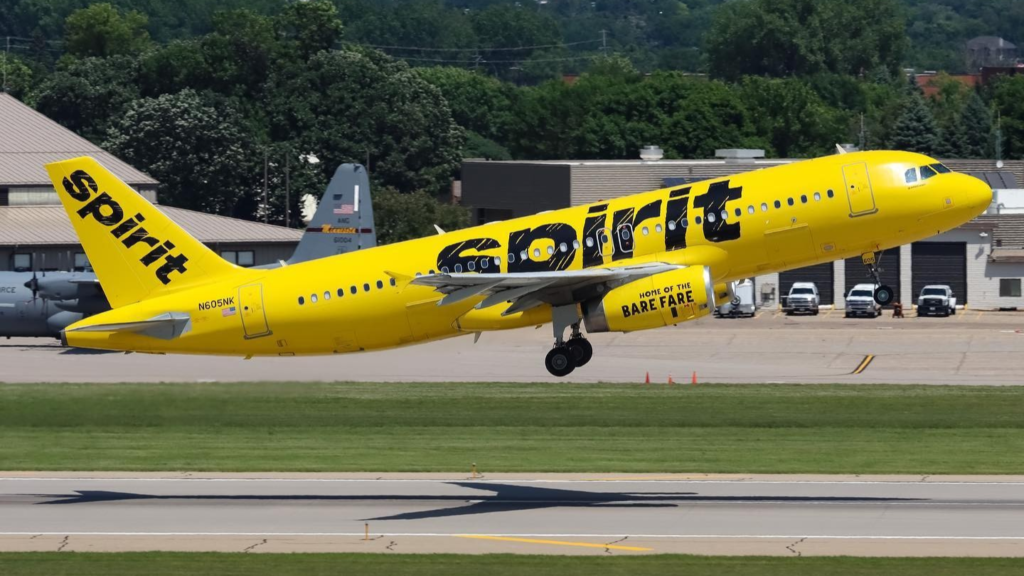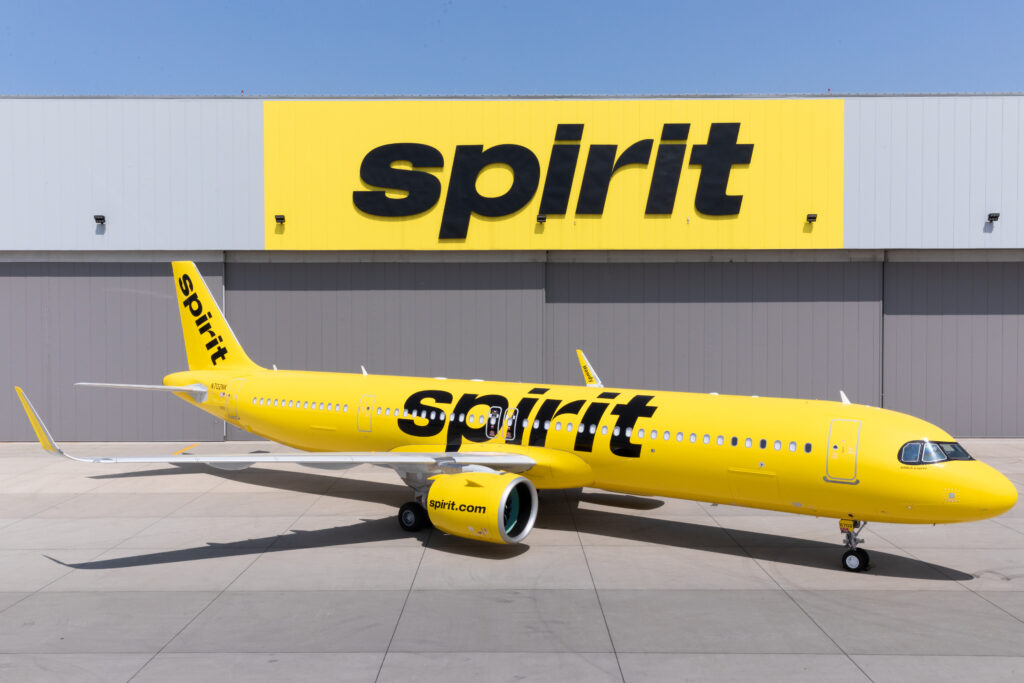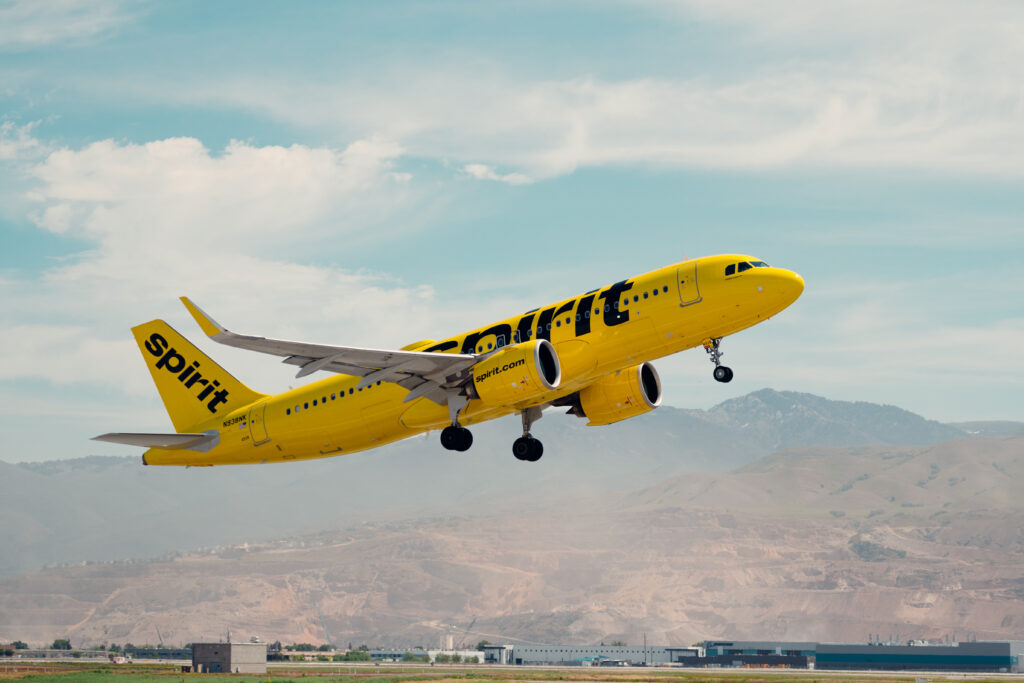
DIANA BEACH- Spirit Airlines (NK) has never shied away from doing things differently. Built around the ultra-low-cost carrier (ULCC) model, Spirit thrives on volume, efficiency, and simplicity. Its bright yellow planes often connect leisure travelers and cost-conscious flyers to some of the most competitive domestic markets in the U.S.
From Las Vegas to Fort Lauderdale and from Dallas-Fort Worth to Detroit, Spirit’s busiest domestic routes paint a clear picture of a network profitable on frequency, dense markets, and wafer-thin margins. The airline is not interested in controlling big hubs — it’s interested in flying around them. And as these rankings show, it’s succeeding at connecting underserved city pairs, secondary airports, and peak leisure corridors.
 Photo: JFK spotting | Instagram
Photo: JFK spotting | InstagramDominating the Leisure Corridors
Spirit’s presence is strongest where American tourists fly by the thousands: Southern California, Las Vegas, and Florida.
The airline’s busiest route from Burbank to Las Vegas is a staple of this model. With over 240 monthly flights, it’s a short flight connecting a budget-conscious hub in Southern California to America’s entertainment capital.
Other popular West Coast routes, such as Las Vegas to San Diego, Las Vegas to Santa Ana, and Las Vegas to Oakland, show how Spirit fills gaps in frequency between high-spending vacation destinations with restricted legacy carrier penetration. These markets are aided by low costs of operation, short stage lengths, and high price elasticity and are thus favorable to Spirit’s model.
Florida, unsurprisingly, predominates the list. Fort Lauderdale is Spirit’s busiest domestic hub with flights to Houston, Detroit, Baltimore, and Chicago-O’Hare, among others. Even within Florida itself, Spirit has a surprisingly high number of intra-state short flights, like the Fort Lauderdale to Orlando route, and this shows that the airline is more than content to compete in niche marketplaces if volume is appropriate.
 Photo: Spirit Airlines
Photo: Spirit AirlinesFort Lauderdale, Las Vegas, and the Power of Frequency
What do Fort Lauderdale and Las Vegas have in common? To Spirit, they are not vacation spots — they’re hubs. Both cities are quasi-hubs, linking a series of north-south and east-west routes. Fort Lauderdale appears on over 11 of Spirit’s top 30 U.S. routes by flights, including routes to Chicago, Dallas, New York, and various Northeast cities. Similarly, Las Vegas is the western focus within Spirit’s network, appearing on flights to Los Angeles, Oakland, Portland, San Diego, and beyond.
By focusing on high-capacity passenger markets with affordable prices, Spirit keeps its aircraft heavily loaded while staying true to its low-cost mission. These markets aren’t just busy — they’re repeatable, efficient, and optimized for day turns.
 Photo: Spirit Airlines
Photo: Spirit AirlinesNortheastern Surge and Selectivity in Major Markets
Although situated on the periphery of the Northeast legacy corridor, Spirit has carved out its niche. Newark Liberty is highlighted with nearby service to Orlando and Fort Lauderdale — high-travel vacation markets in which Spirit’s low fares cannot be ignored. Even LaGuardia appears through its Fort Lauderdale connection, another recognition of how Spirit is incrementally grabbing space in highly regulated and busier airspaces.
Philadelphia and Boston also appear, as much due to their connections with Orlando and Fort Lauderdale. But unlike the large full-service airlines, Spirit doesn’t require a fortress hub to survive. It sights its target in underserved or underpriced O&D markets, using low-fare pricing aggression, strong brand recognition, and operational convenience to ride into the market.
Interestingly, Detroit is one of Spirit’s most stable anchor cities. Fort Lauderdale, Las Vegas, Orlando, and Atlanta are all in the top 15, and while Detroit is a holdover from Spirit’s legacy period, it is a market whose model mirrors their high volume and low fares, particularly among budget-conscious travelers looking for sunshine and entertainment.
| Rank | Route | Flights | Seats | ASMs |
| 1 | Burbank (BUR) – Las Vegas (LAS) | 243 | 42768 | 9537264 |
| 2 | Atlanta (ATL) – Fort Lauderdale (FLL) | 230 | 48957 | 28444017 |
| 3 | New York (EWR) – Orlando (MCO) | 222 | 43630 | 40924940 |
| 4 | Las Vegas (LAS) – San Diego (SAN) | 220 | 38720 | 9989760 |
| 5 | Fort Lauderdale (FLL) – Houston-Intercontinental (IAH) | 196 | 38772 | 37414980 |
| 6 | Las Vegas (LAS) – Los Angeles (LAX) | 196 | 34814 | 8216104 |
| 7 | Las Vegas (LAS) – Oakland (OAK) | 183 | 32420 | 13194940 |
| 8 | Detroit (DTW) – Orlando (MCO) | 180 | 37964 | 36331548 |
| 9 | Las Vegas (LAS) – Santa Ana (SNA) | 174 | 30624 | 6921024 |
| 10 | Las Vegas (LAS) – Sacramento (SMF) | 168 | 30608 | 12151376 |
| 11 | Atlanta (ATL) – Detroit (DTW) | 167 | 35960 | 21360240 |
| 12 | Baltimore (BWI) – Fort Lauderdale (FLL) | 166 | 32144 | 29733200 |
| 13 | Las Vegas (LAS) – San Jose (SJC) | 165 | 29408 | 11351488 |
| 14 | Fort Lauderdale (FLL) – Chicago-O’Hare (ORD) | 163 | 34175 | 40394850 |
| 15 | Detroit (DTW) – Fort Lauderdale (FLL) | 163 | 35375 | 39867625 |
| 16 | Dallas/Fort Worth (DFW) – Las Vegas (LAS) | 160 | 30379 | 32049845 |
| 17 | Nashville (BNA) – Orlando (MCO) | 151 | 26576 | 16370816 |
| 18 | Orlando (MCO) – Philadelphia (PHL) | 141 | 28300 | 24366300 |
| 19 | Atlantic City (ACY) – Orlando (MCO) | 140 | 25711 | 21905772 |
| 20 | Fort Lauderdale (FLL) – New York-La Guardia (LGA) | 136 | 26788 | 28823888 |
| 21 | Boston (BOS) – Orlando (MCO) | 134 | 23584 | 26437664 |
| 22 | Baltimore (BWI) – Orlando (MCO) | 134 | 25676 | 20207012 |
| 23 | Boston (BOS) – Fort Lauderdale (FLL) | 134 | 26598 | 32901726 |
| 24 | Dallas/Fort Worth (DFW) – Fort Lauderdale (FLL) | 134 | 26740 | 29922060 |
| 25 | New York (EWR) – Fort Lauderdale (FLL) | 134 | 28573 | 30430245 |
| 26 | Houston-Intercontinental (IAH) – Las Vegas (LAS) | 131 | 24241 | 29622502 |
| 27 | Dallas/Fort Worth (DFW) – Los Angeles (LAX) | 128 | 26466 | 32685510 |
| 28 | Las Vegas (LAS) – Portland (PDX) | 128 | 22952 | 17489424 |
| 29 | Fort Lauderdale (FLL) – Orlando (MCO) | 123 | 26255 | 4673390 |
| 30 | Detroit (DTW) – Las Vegas (LAS) | 122 | 26719 | 46758250 |
Bottom Line: Simplicity at Scale
Spirit Airlines’ top 30 domestic routes show a network that performs best when it is agile, opportunistic, and ruthlessly efficient. No sprawling hub banks or complex wave schedules here. Rather, it is flights scheduled for pleasure travelers, families, and budget-minded fliers — often departing at non-peak hours and arriving in markets with little low-cost competition.
Each of the routes on this list is a thoughtfully adjusted example of demand-driven frequency. Spirit is not attempting to be everything to everybody.
It goes after routes where it can win, and it wins often by keeping things simple: low fares, high load factors, and a route structure based on high-demand O&D traffic. To Spirit, these top 30 routes represent more than mere statistics as they are the blueprint of a successful model.
Stay tuned with us. Further, follow us on social media for the latest updates.
Join us on Telegram Group for the Latest Aviation Updates. Subsequently, follow us on Google News.
Spirit Airlines Unveils 12 New Menu Items and Go Comfy Seats
The post Spirit Airlines Busiest Domestic Routes in 2025 appeared first on Aviation A2Z.

 4 miesięcy temu
4 miesięcy temu















![Antyrządowa demonstracja w Budapeszcie. Na czele główny rywal Viktora Orbana [ZDJĘCIA]](https://cdn.wiadomosci.onet.pl/1/Puik9lGaHR0cHM6Ly9vY2RuLmV1L3B1bHNjbXMvTURBXy84YWJkMWRjZi0yZWY1LTRmNTktOGMzMS01NDZjNDU3OGI2OTYuanBlZ5KVAwDNAd3NFO_NC8eTBc0JYM0GQN4AAqEwB6ExBA)